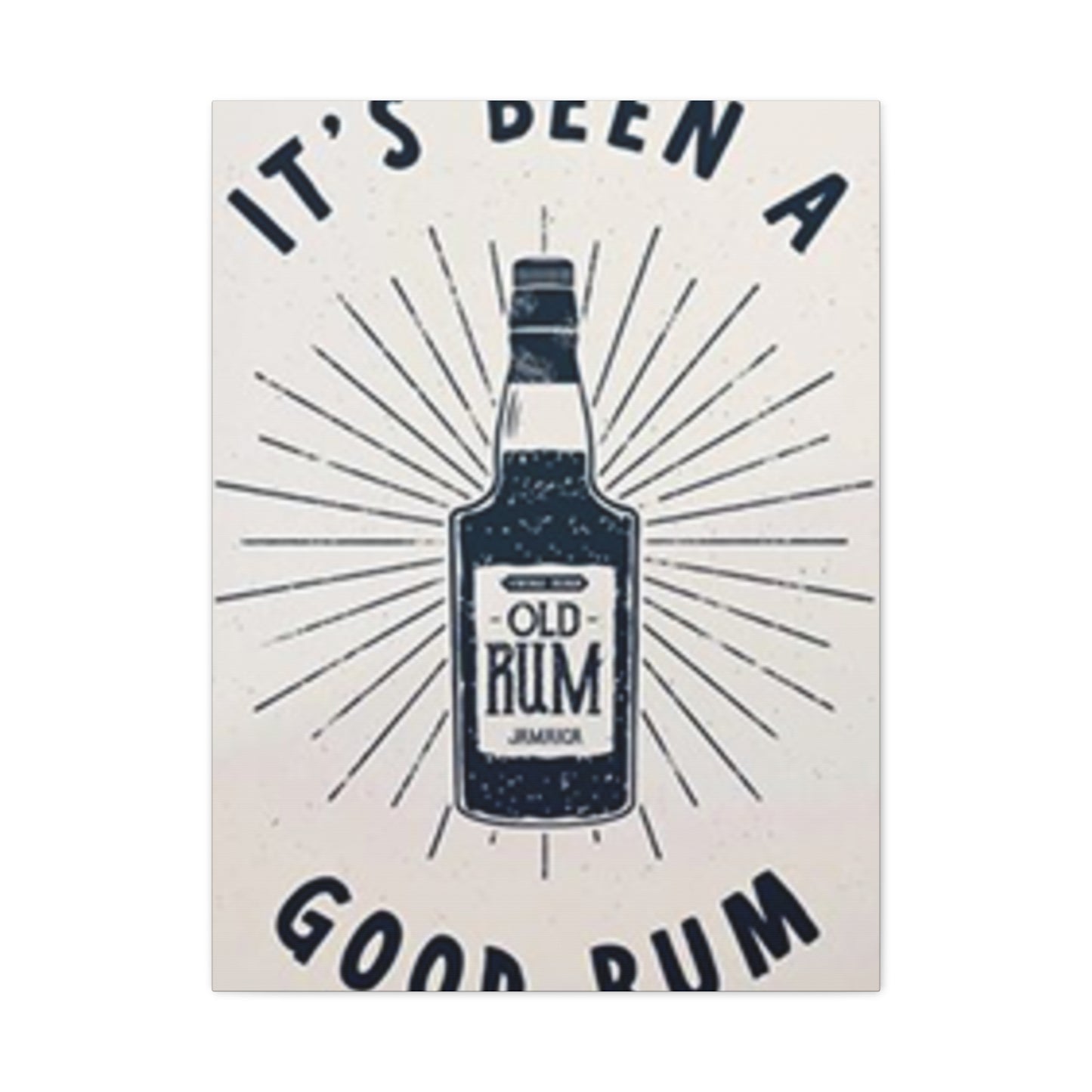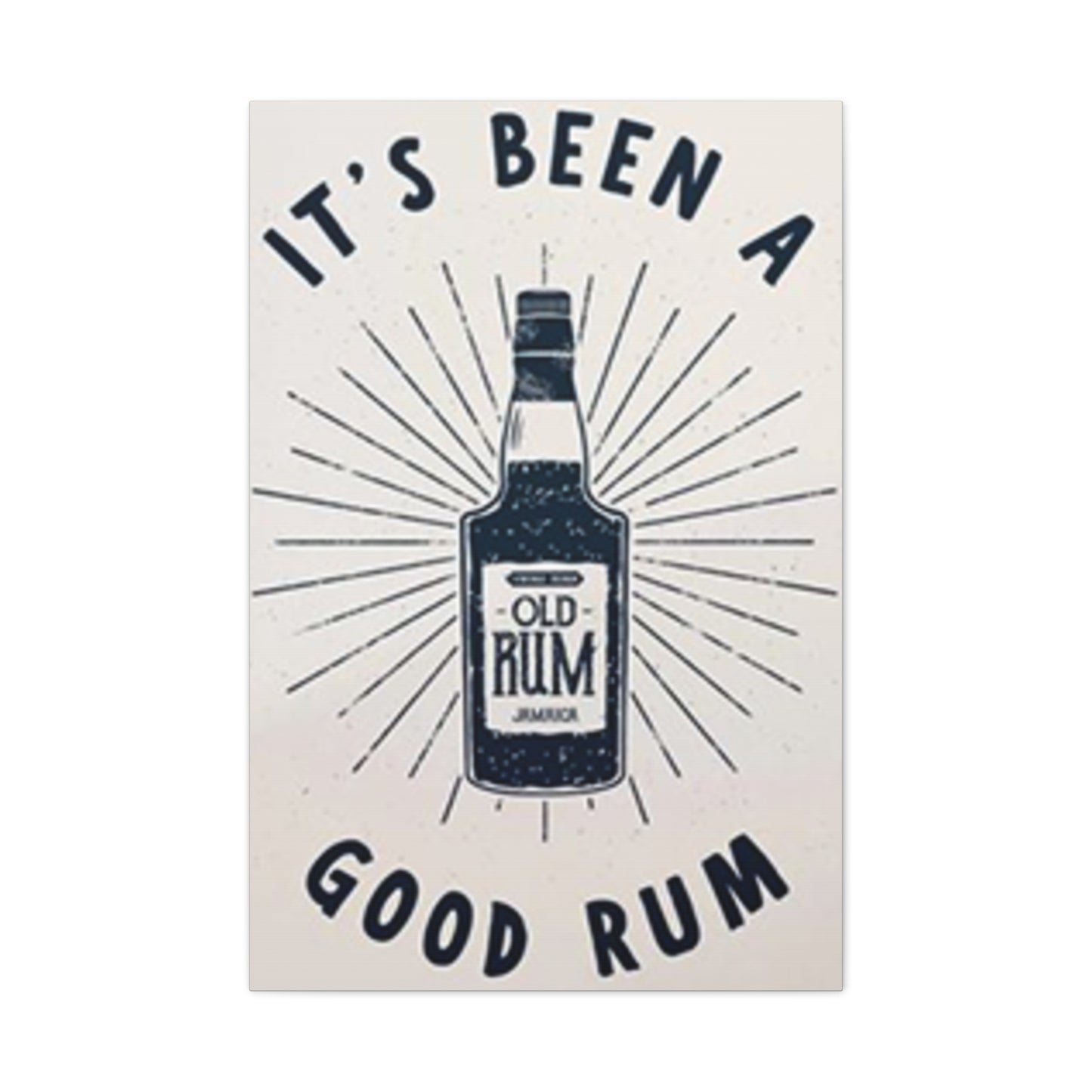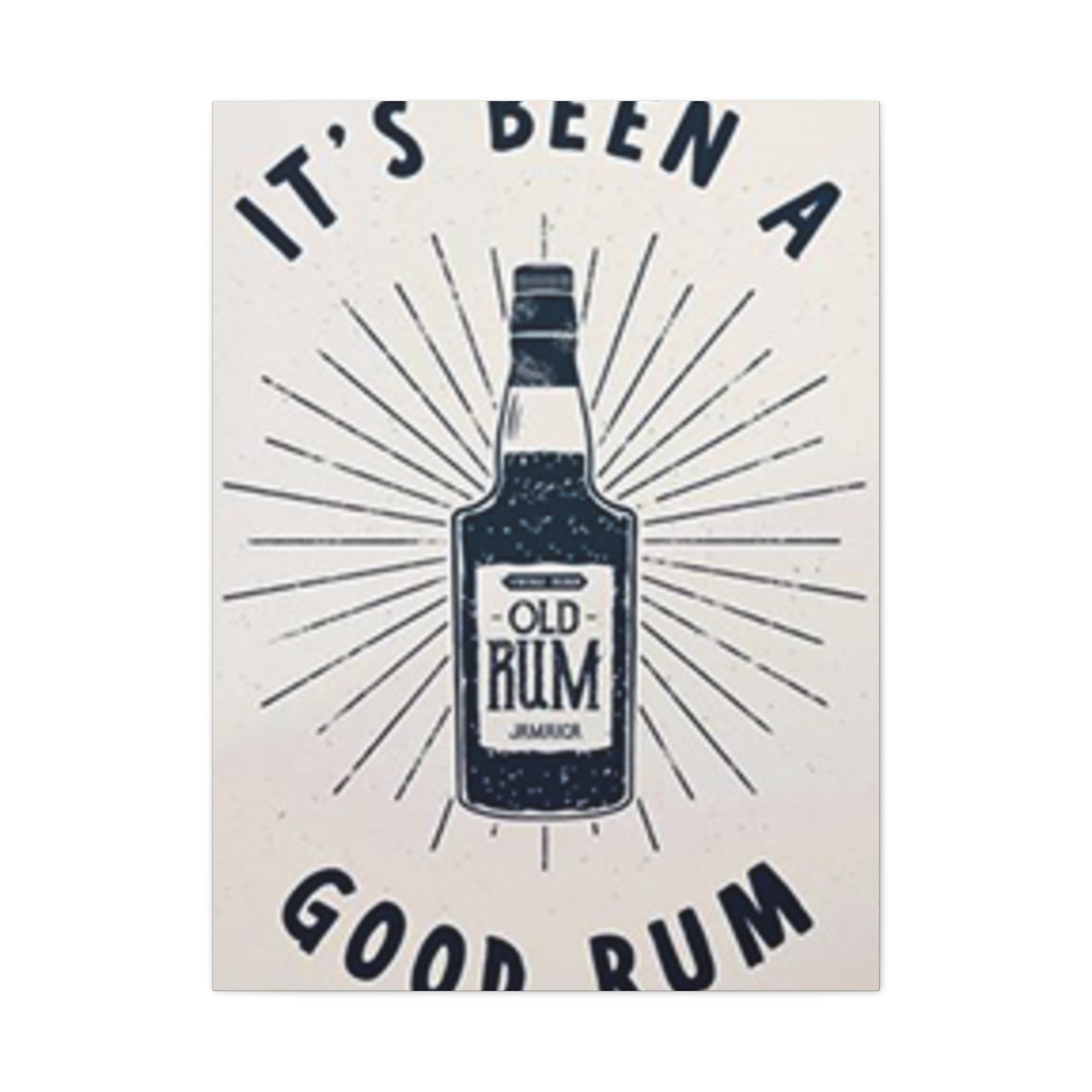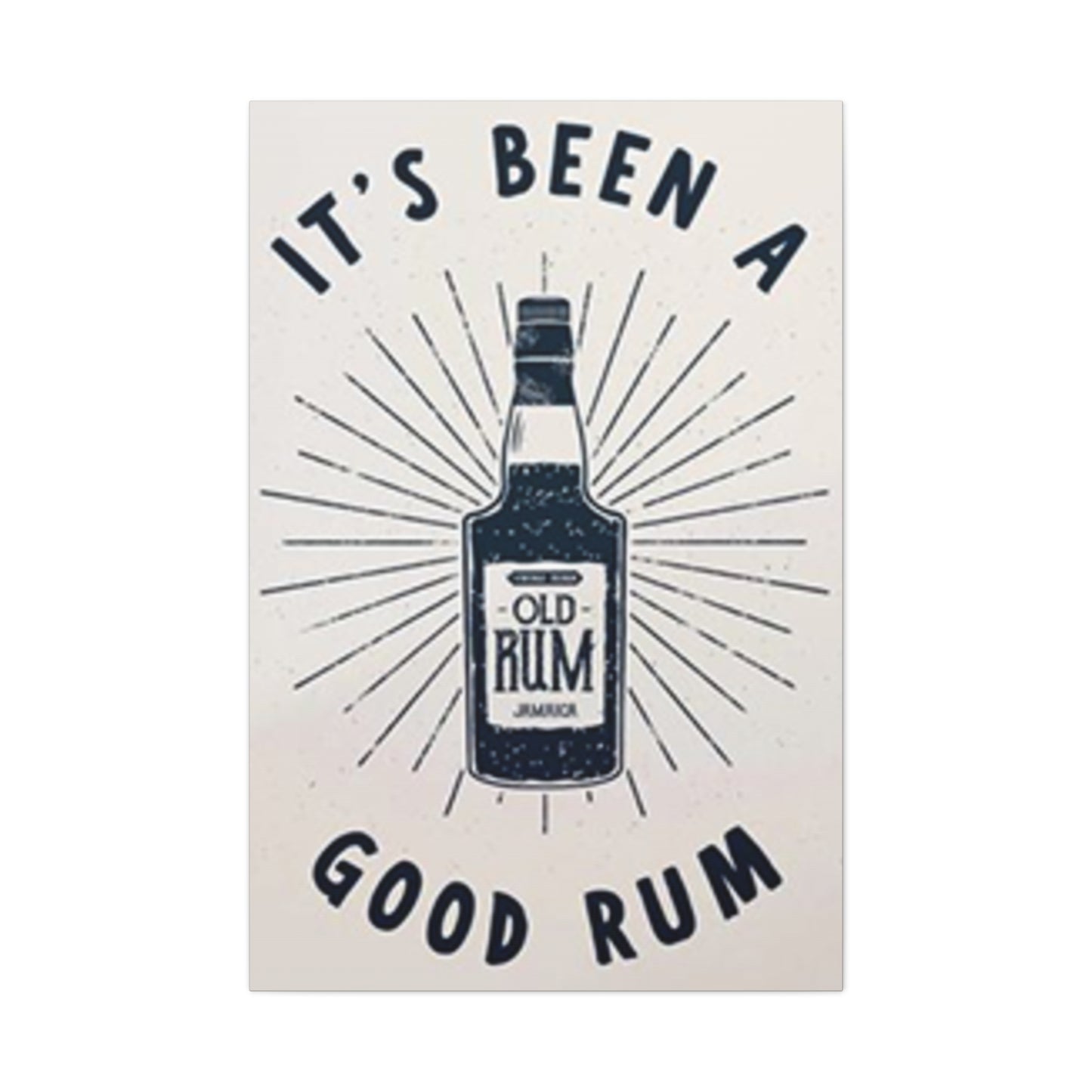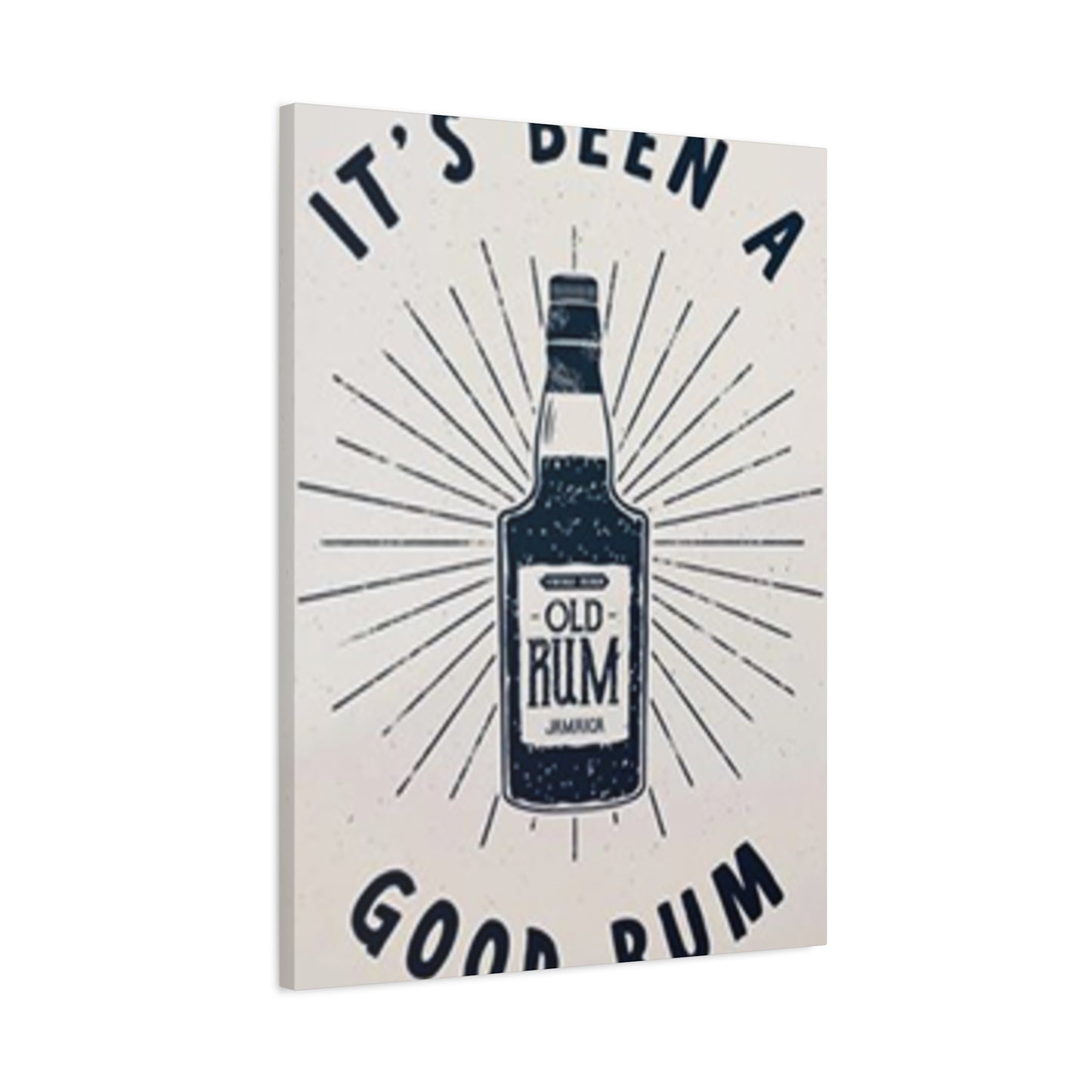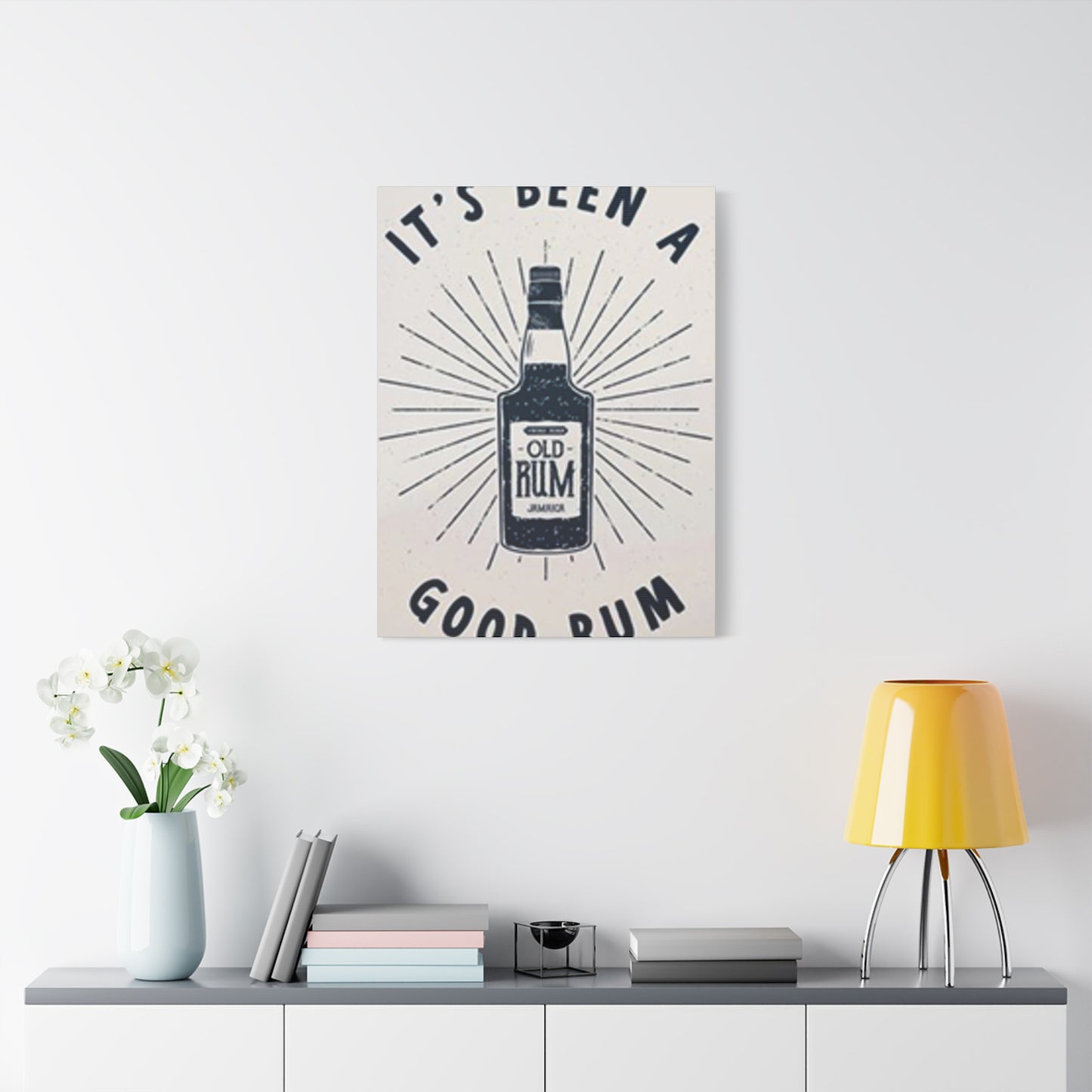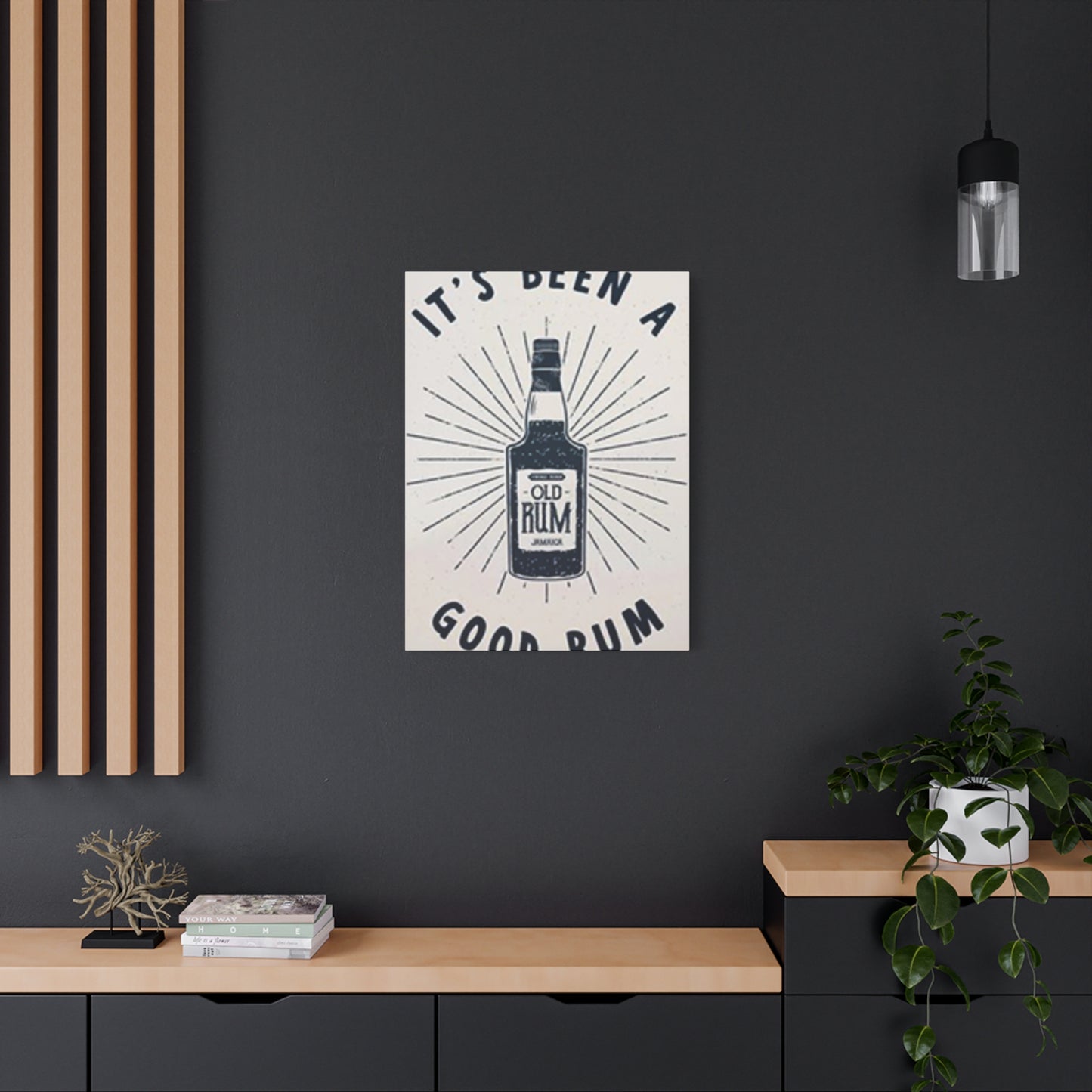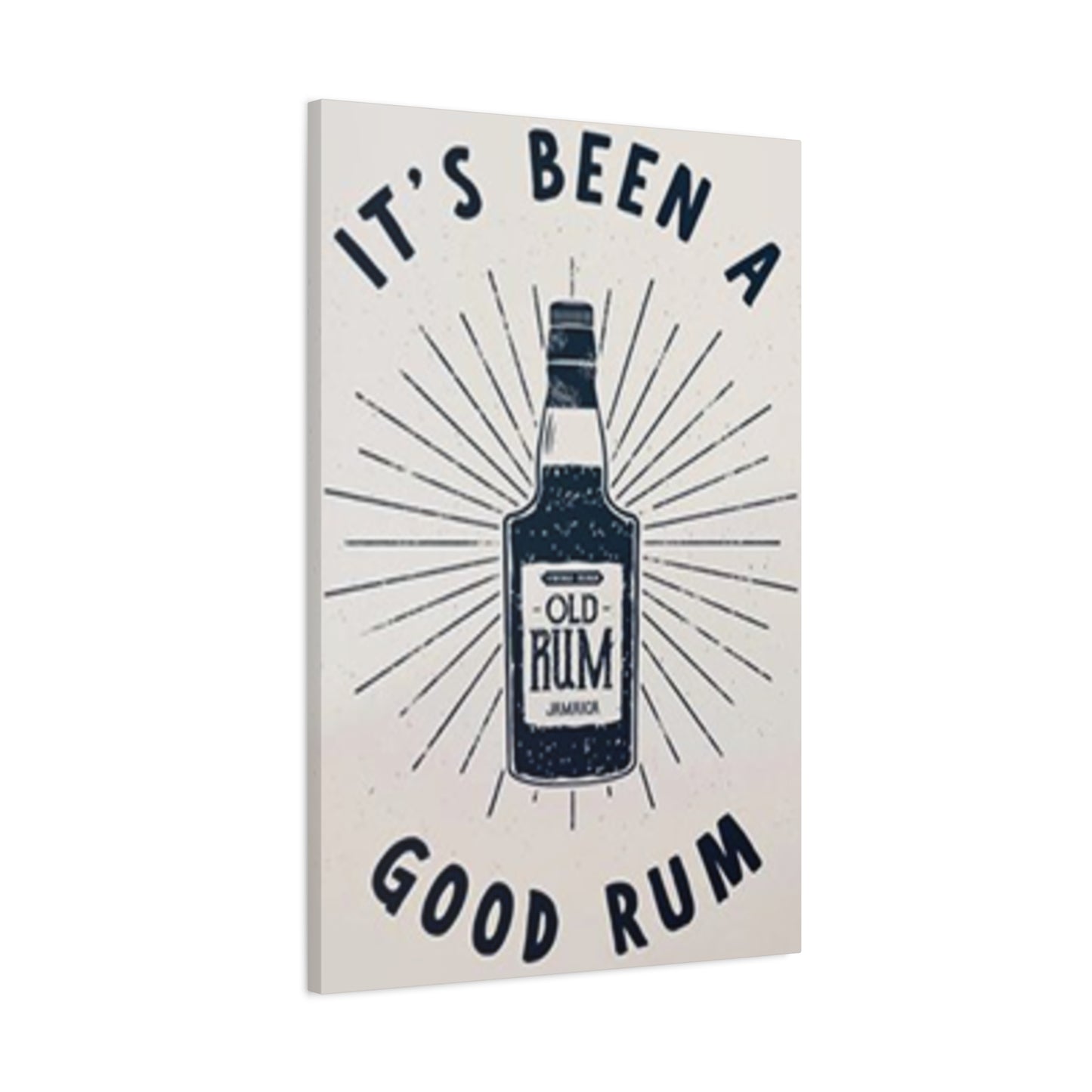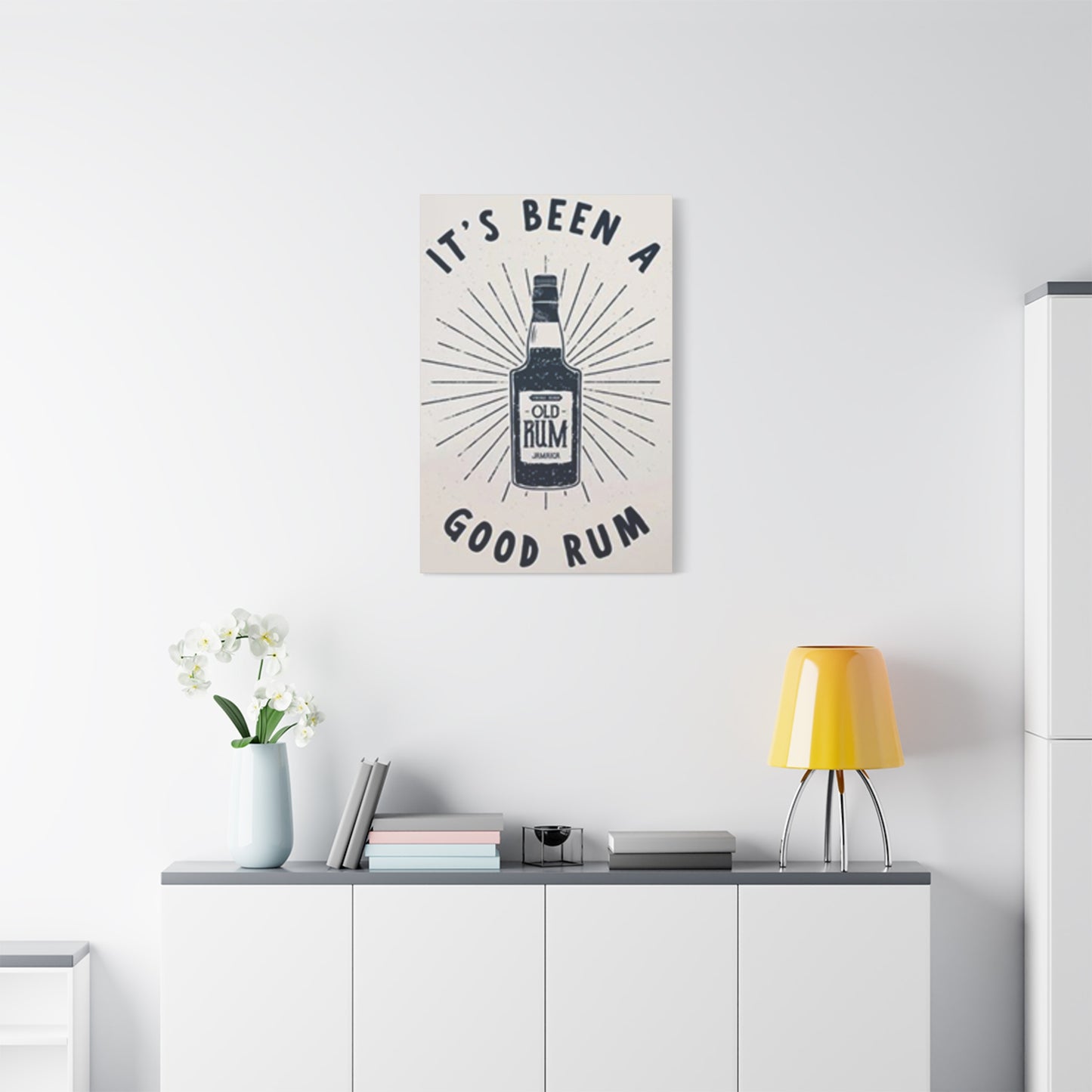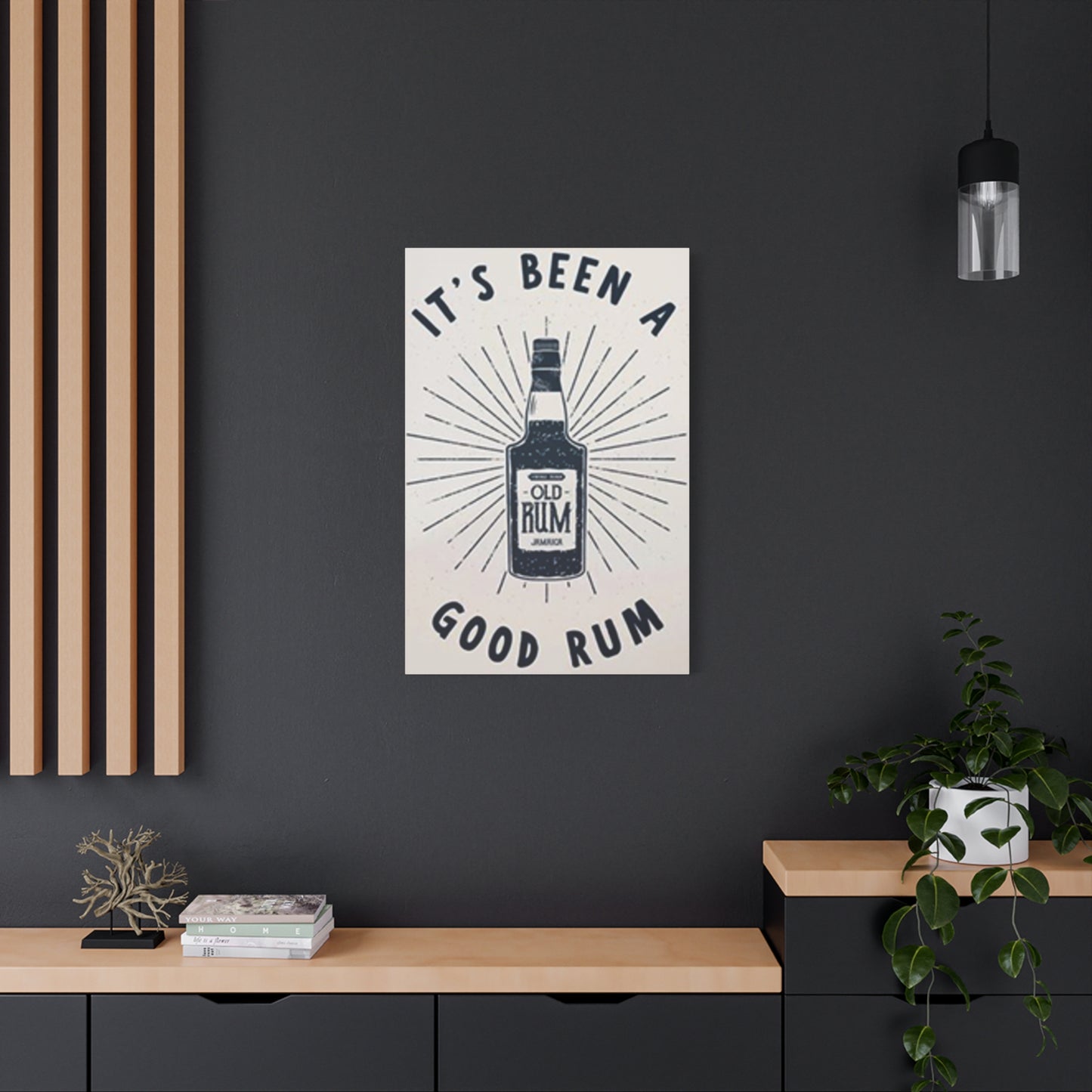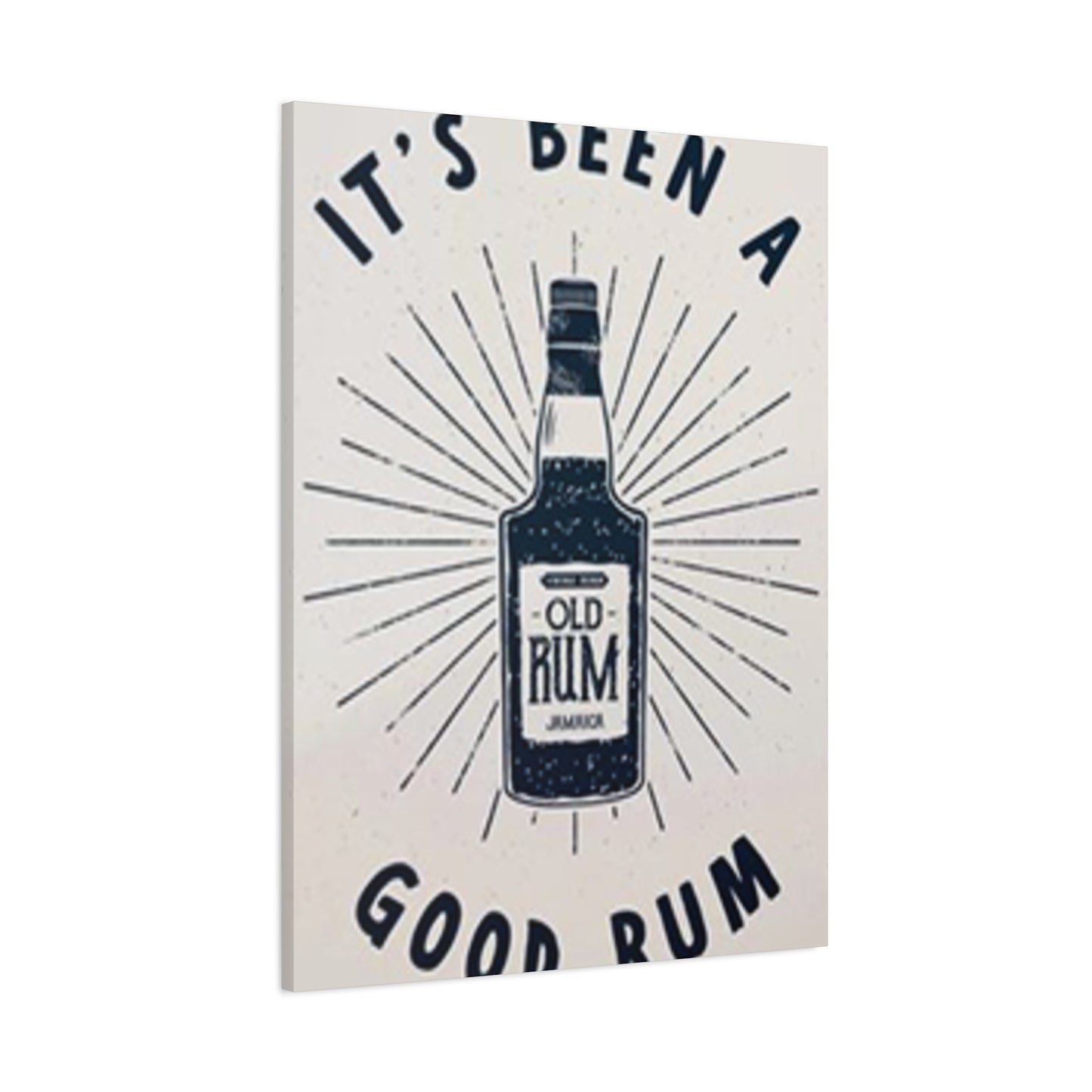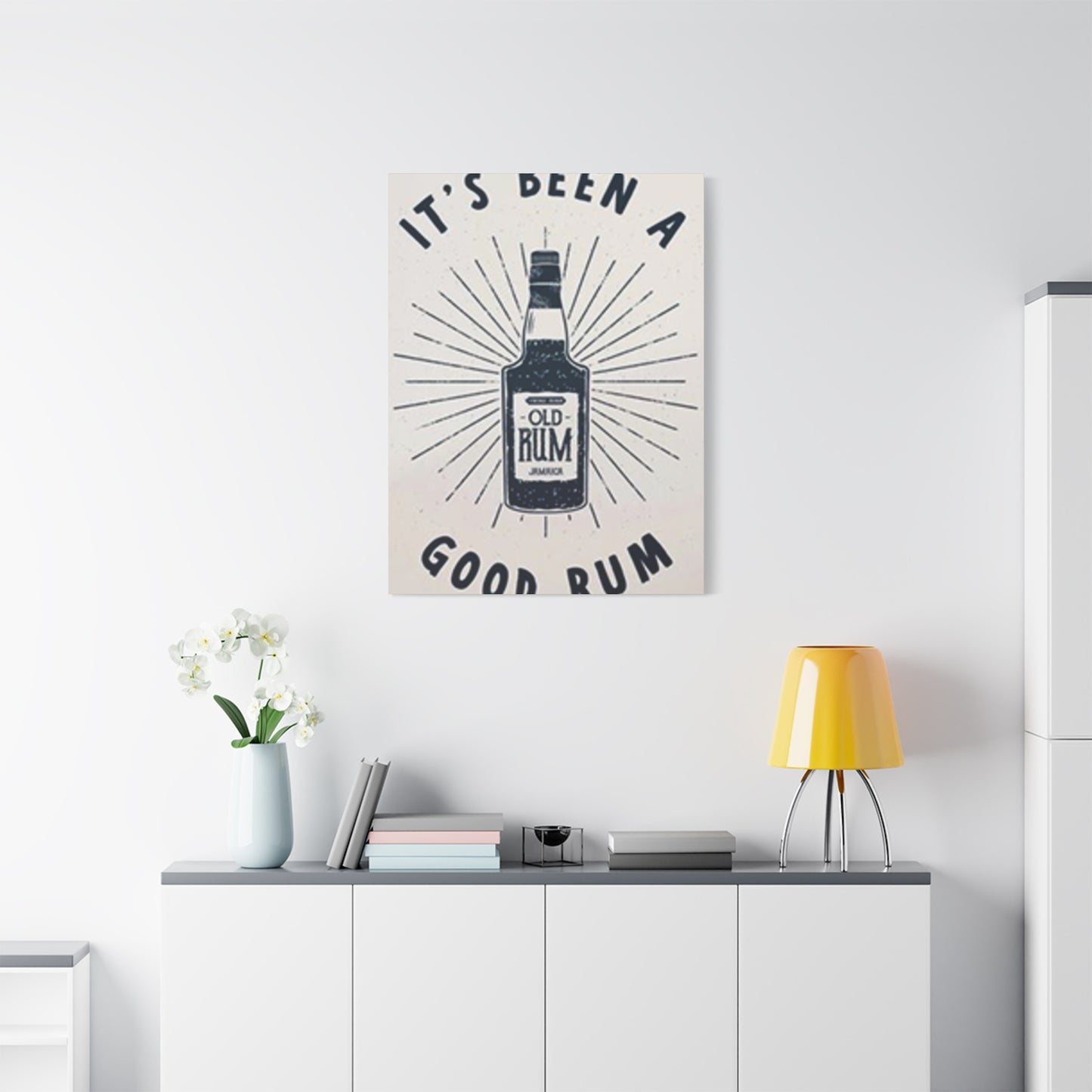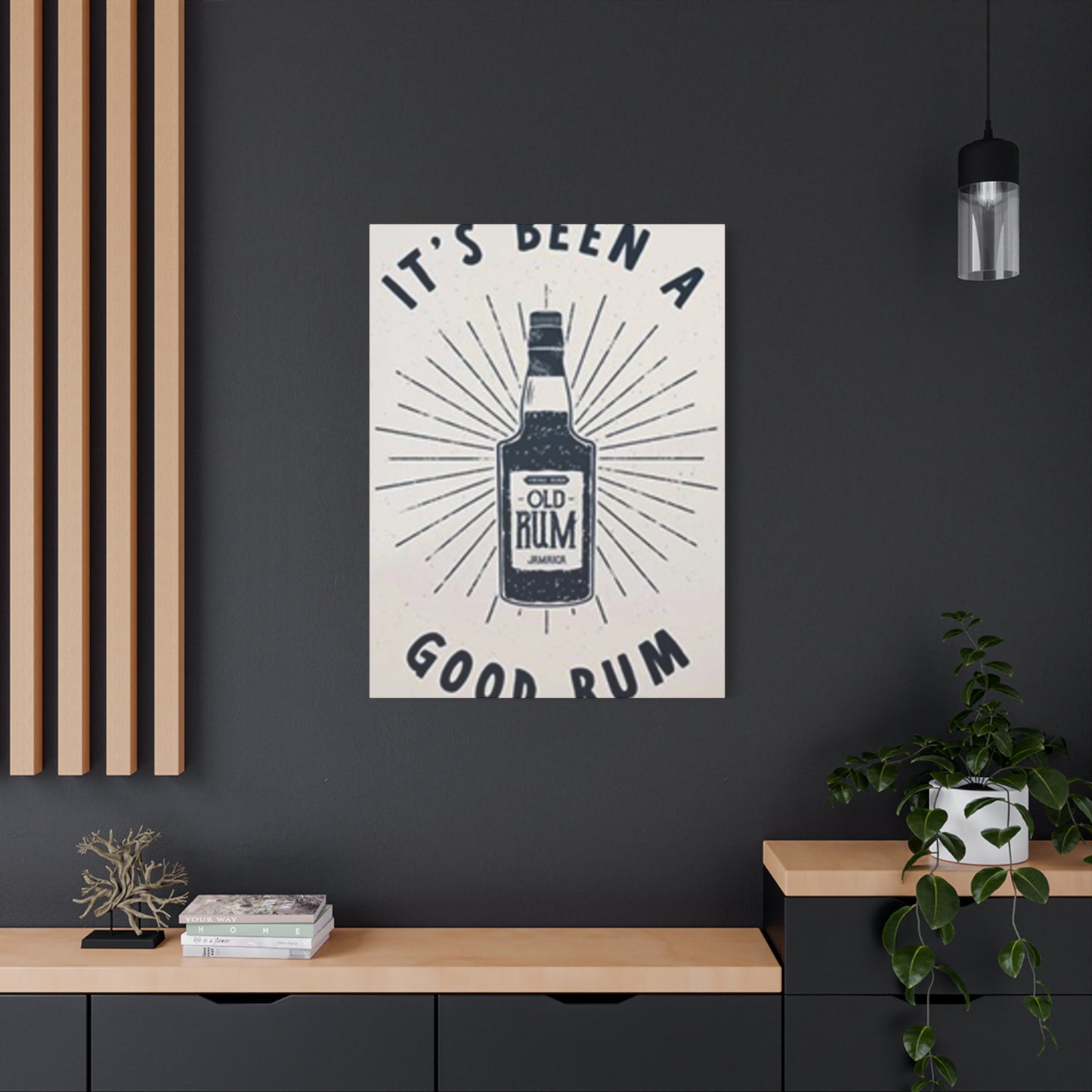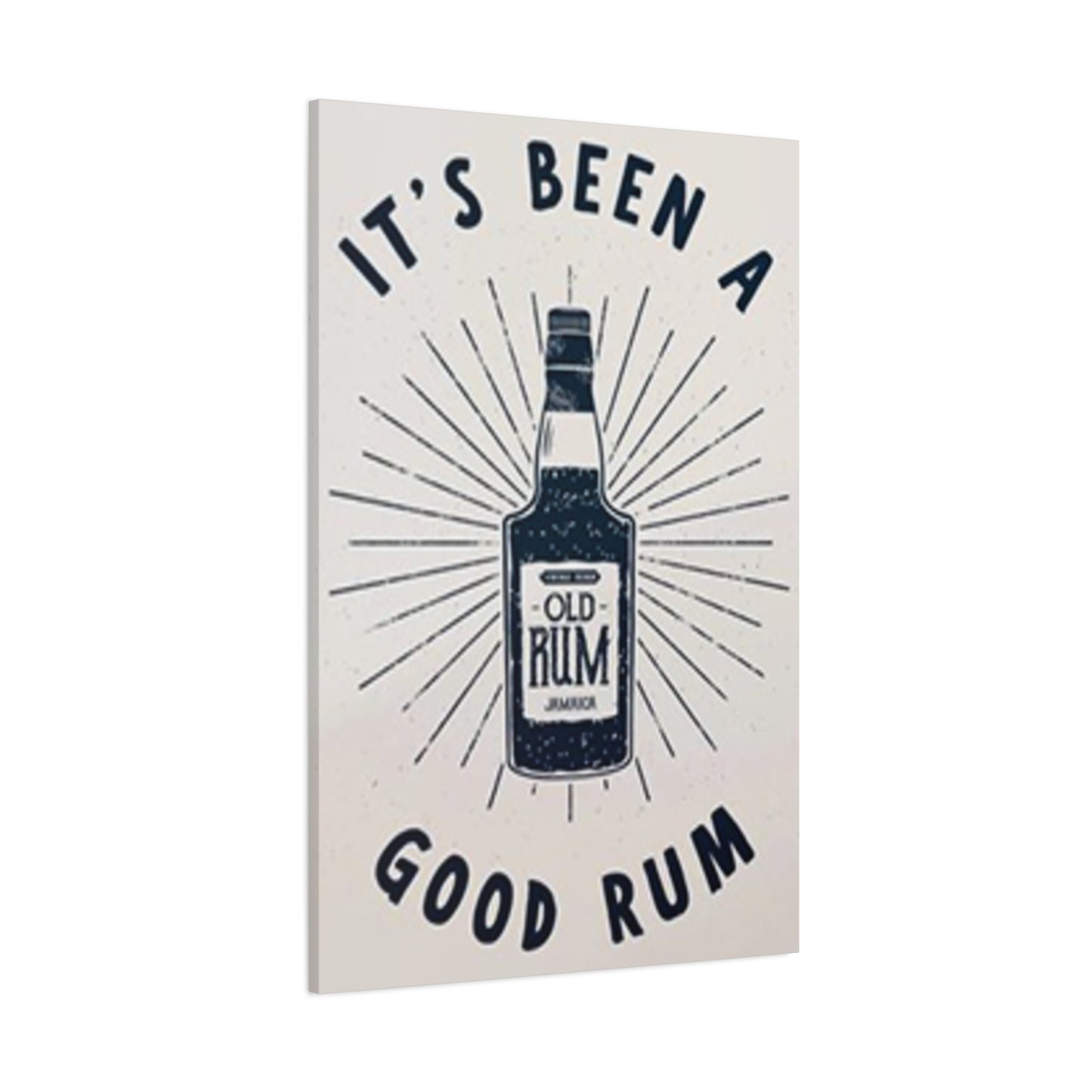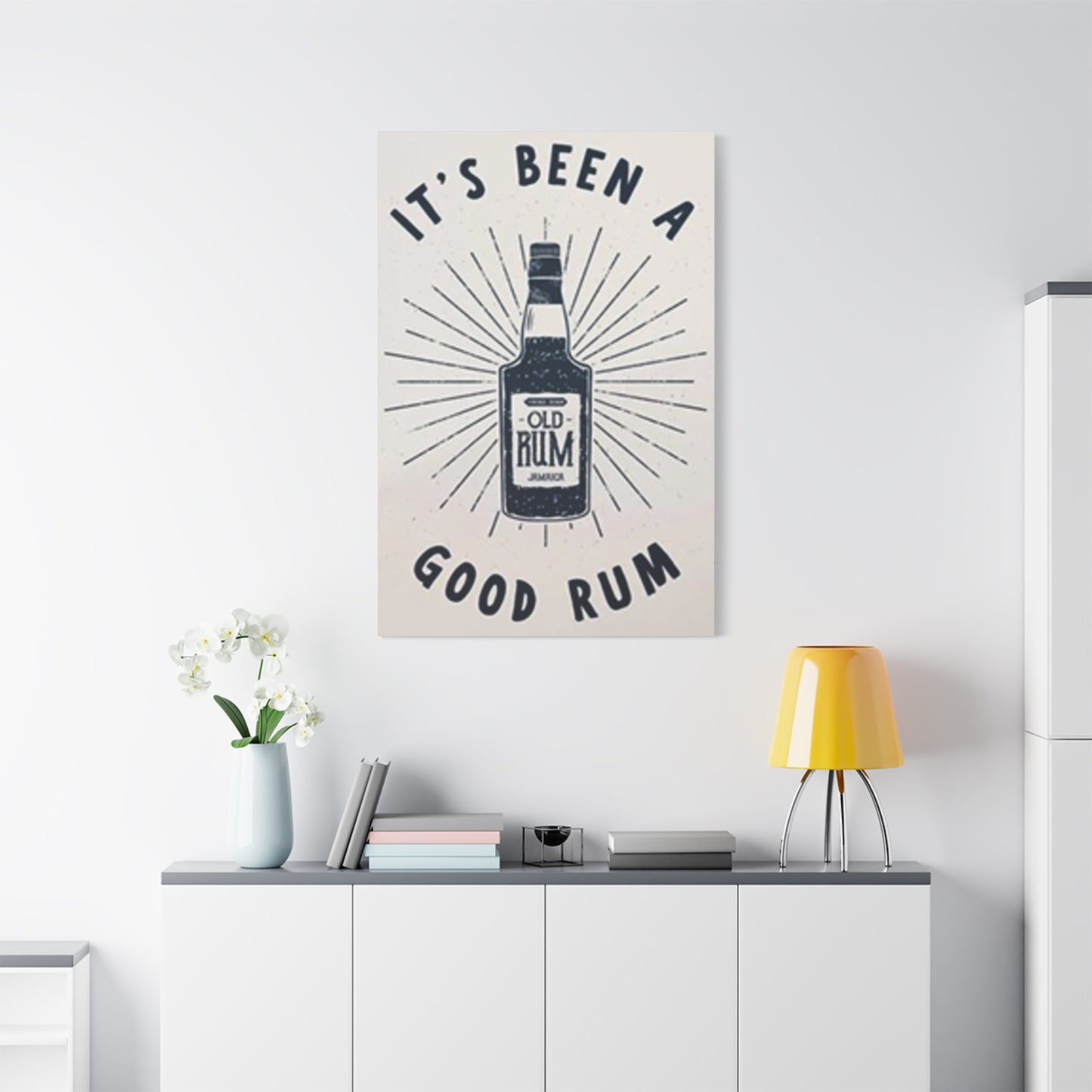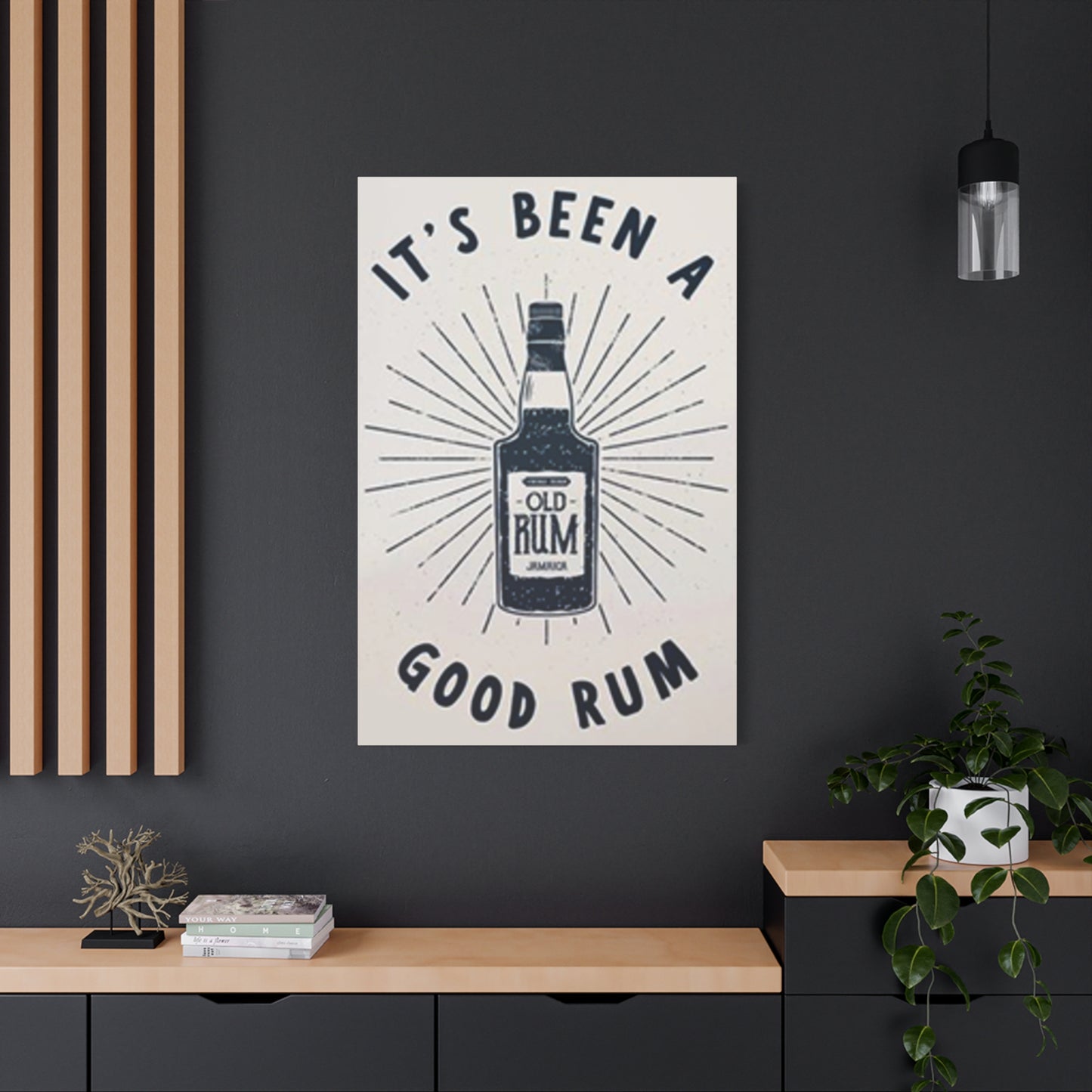Old Rum Poster Wall Art: Bringing Caribbean Spirit and Vintage Charm Into Your Living Space
The world of interior design continuously evolves, yet certain aesthetic elements remain eternally captivating. Among these timeless treasures, classic rum poster wall art stands as a remarkable choice for those seeking to infuse their living spaces with character, history, and sophisticated charm. These artistic pieces do more than simply decorate walls; they transport viewers to an era of craftsmanship, adventure, and the rich cultural heritage surrounding one of the world's most beloved spirits.
Rum poster art represents a unique intersection where beverage history meets visual storytelling. Each piece carries within it the essence of tropical islands, sugarcane plantations, wooden barrels aging in warm Caribbean climates, and the skilled distillers who perfected their craft over centuries. When you choose to display these artworks in your home, bar, or commercial space, you're not merely hanging decorative items but inviting conversations about tradition, exploration, and the refinement of taste that spans generations.
The appeal of these posters transcends simple nostalgia. They embody a design philosophy that values authenticity, bold visual communication, and the artistic merit of commercial illustration from bygone eras. Whether you're drawn to the weathered elegance of aged label reproductions, the striking typography of mid-century advertising, or the romantic imagery of sailing ships and tropical landscapes, rum-themed wall art offers diverse options to suit various interior styles while maintaining a cohesive aesthetic rooted in history and craftsmanship.
Vintage Rum Labels Turned Stunning Wall Decor
The transformation of historical rum labels into contemporary wall decor represents one of the most fascinating trends in modern interior design. Original rum labels from the nineteenth and early twentieth centuries were miniature masterpieces of commercial art, featuring intricate illustrations, ornate typography, and vibrant color palettes designed to capture consumer attention in an increasingly competitive marketplace. Today, these labels have found new life as sought-after decorative elements that bring authenticity and visual interest to residential and commercial spaces alike.
The process of converting vintage labels into wall art involves careful restoration and enhancement of original designs. Many of these labels suffered degradation over time, with colors fading, paper yellowing, and details becoming obscured. Modern reproduction techniques allow artists and designers to digitally restore these treasures, bringing back their original vibrancy while maintaining the authentic character that makes them so appealing. The result is artwork that honors the past while meeting contemporary standards for print quality and durability.
What makes these label-inspired pieces particularly compelling is the remarkable variety of design approaches they represent. Some labels featured realistic illustrations of rum production processes, showing sugarcane fields, distillery equipment, or barrel aging facilities. Others employed symbolic imagery like sailing ships, tropical birds, palm trees, or Caribbean architectural elements to evoke the exotic origins of the spirit. Still others relied on bold typography and geometric patterns to create immediate visual impact. This diversity ensures that collectors and decorators can find pieces that align perfectly with their aesthetic preferences.
The artistic merit of these vintage labels extends beyond their nostalgic appeal. Many were created by skilled commercial artists who applied the same techniques used in fine art illustration. They employed principles of composition, color theory, and visual hierarchy to create designs that were both functionally effective as product packaging and aesthetically pleasing as standalone artworks. When enlarged and displayed as wall art, these qualities become even more apparent, allowing viewers to appreciate details that might have gone unnoticed on a small bottle label.
Incorporating label-inspired wall art into your decor scheme requires thoughtful consideration of scale, placement, and surrounding elements. A single large-scale reproduction of an iconic label can serve as a dramatic focal point in a room, commanding attention and setting the tone for the entire space. Alternatively, a curated collection of smaller label reproductions arranged in a gallery wall configuration can create visual interest through variety and repetition, telling a broader story about rum's diverse heritage and the evolution of design aesthetics over time.
The color palettes found in vintage rum labels tend toward rich, warm tones that create inviting atmospheres. Deep reds, golden ambers, forest greens, and navy blues predominate, often accented with metallic gold or silver elements that add a touch of luxury. These colors work exceptionally well in spaces designed for relaxation and entertainment, complementing wood furniture, leather upholstery, and other materials commonly found in home bars, lounges, and study areas. They also pair beautifully with both traditional and contemporary furnishings, demonstrating remarkable versatility.
Beyond their visual appeal, label-inspired wall art pieces serve as conversation starters and educational tools. Each label tells a story about a specific distillery, region, or historical period. Guests and visitors naturally gravitate toward these pieces, drawn by their striking visuals and intrigued by the historical narratives they represent. This interactive quality makes them particularly valuable in social spaces where stimulating conversation is desired, transforming ordinary gatherings into opportunities for cultural exchange and shared appreciation of craftsmanship.
The market for vintage label reproductions has expanded significantly in recent years, with numerous artists, designers, and specialty retailers offering high-quality prints in various formats. Canvas prints provide texture and depth, mimicking the appearance of original painted artwork. Framed paper prints offer a more traditional presentation that emphasizes the historical nature of the designs. Metal prints create a contemporary interpretation that pairs vintage imagery with modern production techniques, resulting in pieces that feel both nostalgic and current. Each format offers distinct advantages, allowing decorators to choose options that best suit their space and style preferences.
Authenticity remains a key consideration when selecting label-inspired wall art. While exact reproductions of historical labels maintain faithful adherence to original designs, many contemporary artists create new works inspired by vintage label aesthetics. These pieces incorporate traditional design elements, typography styles, and imagery associated with classic rum labels while introducing modern interpretations and creative variations. Both approaches have merit, with reproductions appealing to purists and history enthusiasts, while inspired works attract those seeking unique pieces that blend tradition with contemporary artistic vision.
The rising popularity of label-inspired wall art has also sparked renewed interest in the history of rum production and the cultural contexts that shaped label designs. Collectors often research the distilleries, brands, and historical periods represented in their artwork, developing deeper appreciation for the pieces they display. This educational dimension adds layers of meaning to the decorative function, transforming wall art from simple ornamentation into a window onto fascinating aspects of industrial history, graphic design evolution, and cultural exchange between regions and nations.
Celebrate Rum Heritage with Poster Art
Rum possesses a cultural heritage as rich and complex as its flavor profiles. From its origins in Caribbean sugarcane plantations to its role in maritime trade, naval traditions, and the development of cocktail culture, rum occupies a unique position in global history. Poster art celebrating this heritage offers a powerful medium for honoring these traditions while creating visually compelling spaces that resonate with history enthusiasts, spirit connoisseurs, and design aficionados alike.
The heritage of rum intertwines with stories of exploration, colonization, trade, and cultural fusion. Early rum production emerged in the Caribbean during the seventeenth century, when plantation workers discovered that molasses, a byproduct of sugar refining, could be fermented and distilled into a potent spirit. This discovery transformed Caribbean economies and established rum as a valuable commodity in international trade networks. Poster art that celebrates this heritage often incorporates imagery referencing these historical foundations, including sugarcane plants, copper pot stills, oak barrels, and sailing vessels that transported rum across oceans.
Naval connections represent another significant aspect of rum heritage frequently depicted in poster art. The British Royal Navy famously provided daily rum rations to sailors from 1655 until 1970, a tradition that profoundly influenced maritime culture and established rum as the sailor's spirit. Posters celebrating this connection often feature nautical elements like anchors, ships' wheels, rope borders, and maritime flags, creating compositions that evoke the romance and adventure of seafaring life. These designs appeal particularly to those who appreciate naval history or seek to create spaces with maritime themes.
Caribbean cultural identity forms yet another crucial dimension of rum heritage expressed through poster art. The spirit is deeply embedded in the traditions, celebrations, and daily life of Caribbean nations, where it has been produced for centuries. Poster designs celebrating this aspect often incorporate vibrant colors, tropical imagery, architectural elements from Caribbean towns, and representations of local festivals and traditions. These pieces bring energy, warmth, and cultural richness to interior spaces, serving as visual celebrations of Caribbean creativity and joie de vivre.
The craft and artisanship involved in traditional rum production provide endless inspiration for heritage-focused poster art. The process of creating fine rum involves numerous steps, each requiring skill, knowledge, and patience. From selecting and processing sugarcane or molasses, to fermentation, distillation, aging, and blending, master distillers apply expertise developed over lifetimes and passed down through generations. Posters that highlight these processes often feature detailed illustrations of production equipment, barrel aging facilities, and the hands-on work of distillery craftspeople, paying tribute to the skill and dedication that create exceptional spirits.
Historical brand stories offer particularly compelling material for heritage poster art. Many rum producers have operated for centuries, surviving wars, economic upheavals, natural disasters, and changing consumer preferences. Their longevity testifies to the quality of their products and the strength of their brand identities. Posters celebrating specific brands often incorporate founding dates, family crests, historical anecdotes, and visual elements from various eras of the company's existence, creating layered compositions that tell comprehensive stories about persistence, quality, and tradition.
The evolution of rum consumption patterns and cocktail culture provides additional context for heritage-themed poster art. Rum has been central to the development of numerous classic cocktails, from the simple rum and cola to sophisticated creations like the Mai Tai, Mojito, Daiquiri, and Piña Colada. The golden age of cocktail culture in the mid-twentieth century saw rum featured prominently in tiki bars and tropical-themed establishments, spawning a distinctive aesthetic that continues to influence design today. Posters referencing this era often incorporate tropical motifs, bamboo patterns, exotic flowers, and stylized typography that captures the playful sophistication of vintage cocktail culture.
Geographic diversity within rum production adds another layer to heritage celebration through poster art. While Caribbean islands remain the spiritual homeland of rum, production has spread to regions including Central and South America, the Philippines, Mauritius, and even locations in Europe and North America. Each region brings unique characteristics to its rum production, influenced by local sugarcane varieties, climate conditions, distillation traditions, and aging techniques. Posters that acknowledge this geographic diversity often feature maps, regional symbols, or side-by-side comparisons that educate viewers about the global reach of rum culture while honoring distinct regional traditions.
Collecting heritage-focused rum poster art can become a rewarding pursuit that combines aesthetic appreciation with historical learning. As collectors acquire pieces representing different eras, regions, brands, and production methods, they assemble visual libraries that document the multifaceted story of rum. Display arrangements can be organized chronologically to show evolution over time, geographically to illustrate regional variations, or thematically to explore specific aspects like production techniques or cocktail culture. This curatorial approach transforms personal collections into educational exhibitions that benefit both collectors and their guests.
The emotional resonance of heritage-focused poster art extends beyond intellectual appreciation of history. These pieces evoke feelings of warmth, adventure, craftsmanship, and connection to traditions that have shaped cultures and brought people together across generations. In an era characterized by rapid change and digital experiences, tangible connections to history and traditional craftsmanship hold particular appeal. Heritage rum posters satisfy this desire for connection, offering visual anchors that ground contemporary spaces in stories of human skill, cultural exchange, and the enduring pleasure of well-crafted spirits.
Bold and Timeless Old Rum Prints
The concept of boldness in design refers to visual elements that command immediate attention and leave lasting impressions. Old rum prints exemplify this quality through their strategic use of contrast, dramatic typography, striking color combinations, and confident compositions that refuse to fade into background obscurity. These characteristics, combined with timeless design principles that transcend temporary trends, create artwork that remains relevant and visually powerful regardless of changing fashion cycles.
Typography plays a central role in creating bold visual impact in classic rum prints. Designers of historical rum advertising understood that text needed to capture attention in crowded marketplaces and compete with numerous other visual stimuli. They employed large, heavy letterforms, often with distinctive serifs or decorative elements that enhanced readability while adding character. These typographic choices created hierarchy and guided viewer attention, ensuring that brand names and key messages registered immediately. Modern reproductions and inspired works continue this tradition, using typography as a primary tool for creating visual drama and establishing immediate presence.
Color contrast serves as another essential element in bold rum print design. Historical printing limitations often resulted in restricted color palettes, leading designers to maximize impact through strategic color relationships. Bold combinations like gold on deep blue, white on black, red on cream, or navy on tan created strong visual separation that made designs legible from distance and memorable after brief viewing. These high-contrast approaches remain effective today, offering alternatives to the subtle, muted palettes that dominate much contemporary design. In spaces where visual impact is prioritized, bold color choices command attention and establish strong aesthetic statements.
Compositional confidence distinguishes truly bold rum prints from merely decorative pieces. Effective compositions direct viewer attention through deliberate arrangement of elements, creating visual pathways that guide the eye while maintaining overall balance. Bold designs often feature central focal points, strong diagonal lines, or dramatic scale variations that create dynamic tension. They avoid timidity, making decisive statements about element placement, size relationships, and spatial organization. This compositional assurance gives prints authority and presence, transforming them from wall decorations into architectural features that influence entire room atmospheres.
The timelessness of classic rum prints stems from their adherence to fundamental design principles rather than temporary stylistic trends. While specific visual languages shift with cultural movements and technological changes, certain aesthetic qualities remain perpetually appealing. Symmetry and balance create inherent satisfaction in human perception. Clear hierarchy facilitates understanding and creates comfortable viewing experiences. Appropriate contrast ensures accessibility and impact. Quality craftsmanship commands respect regardless of era. Rum prints that embody these enduring principles maintain relevance across decades, resisting the obsolescence that afflicts trend-driven design.
Material quality and production methods significantly influence the boldness and longevity of rum prints. High-quality reproduction techniques preserve fine details, maintain color accuracy, and prevent premature degradation that can diminish visual impact over time. Canvas prints stretched over substantial frames project confidence through their physical presence and texture. Heavy-weight paper stocks provide appropriate foundation for bold graphics. Protective coatings shield colors from fading and surfaces from damage. Investment in quality materials ensures that prints maintain their intended impact throughout years of display, justifying initial costs through enduring performance.
Scale considerations amplify the boldness of rum prints. While small prints can charm through delicate detail, large-scale pieces command spaces through sheer physical presence. A rum poster measuring several feet in each dimension becomes an architectural element rather than mere decoration, establishing visual hierarchy within rooms and influencing furniture arrangement, lighting design, and accessory selection. Bold designs benefit particularly from substantial scale, as enlargement emphasizes their confident compositions and dramatic visual elements. When space allows, choosing larger formats maximizes impact and creates memorable focal points.
The interaction between bold rum prints and surrounding decor elements requires careful consideration to achieve desired effects. In minimalist spaces with neutral backgrounds and simple furnishings, bold prints provide necessary visual interest and personality, preventing environments from feeling sterile or impersonal. In more elaborate settings with patterned textiles, varied textures, and numerous decorative objects, bold prints must possess sufficient visual strength to maintain presence without creating chaotic competition. Strategic placement, appropriate framing, and thoughtful integration with color schemes ensure that bold prints enhance rather than overwhelm their contexts.
Historical context enhances appreciation for the boldness of classic rum prints. Many originated in eras when advertising competed primarily in print media rather than digital channels. Designs needed to arrest attention in newspapers, magazines, and posters competing for public notice. This competitive pressure pushed designers toward increasingly bold solutions that could cut through visual clutter and lodge brands in consumer memory. Understanding this context deepens appreciation for the intentionality behind bold design choices and the skilled execution required to balance impact with aesthetic refinement.
The psychological effects of bold design elements in living spaces merit consideration when selecting rum prints. Bold visuals tend to energize environments, creating stimulating atmospheres that encourage activity and conversation. They express confidence and decisiveness, qualities that can influence room perception and occupant mood. In social spaces like entertainment areas and dining rooms, these energizing qualities prove beneficial, promoting engagement and conviviality. In more contemplative spaces like studies or reading areas, bold elements might be used more sparingly, serving as accent pieces rather than dominant features, or balanced with calming elements that moderate their intensity.
Collecting bold rum prints offers opportunities to explore evolution in graphic design approaches across decades. Comparing prints from different eras reveals shifting attitudes toward typography, composition, color, and illustration style. Art Nouveau examples showcase organic forms and flowing lines. Art Deco pieces emphasize geometric precision and streamlined modernity. Mid-century designs balance playfulness with sophistication through clever illustration and confident spatial arrangements. Contemporary interpretations remix these influences while introducing current sensibilities. A collection spanning these stylistic movements becomes a visual timeline of design history, offering educational value alongside aesthetic pleasure.
Bring Caribbean Vibes with Rum Poster Art
The Caribbean region possesses a distinctive cultural identity characterized by vibrant colors, laid-back attitudes, tropical landscapes, and rich artistic traditions. Rum poster art serves as an effective medium for channeling these Caribbean vibes into interior spaces, regardless of geographic location. Through strategic use of imagery, color palettes, compositional approaches, and thematic content, these artworks transport viewers to sun-drenched islands and infuse environments with the warmth and vitality associated with Caribbean life.
Color choices constitute the most immediate and powerful tool for evoking Caribbean atmospheres through poster art. The region's visual landscape features brilliant turquoise waters, golden beaches, lush green vegetation, vibrant tropical flowers, and intense sunlight that saturates colors to maximum intensity. Effective Caribbean-inspired rum posters incorporate these hues through bold applications of aqua, coral, lime green, sunshine yellow, and deep ocean blue. These colors trigger associations with vacation experiences, natural beauty, and carefree island living, instantly establishing desired atmospheric qualities in spaces where they're displayed.
Tropical imagery provides another essential element for creating authentic Caribbean vibes. Palm trees, hibiscus flowers, birds of paradise, coconuts, pineapples, and other flora and fauna native to Caribbean ecosystems frequently appear in rum poster designs. These natural elements reference the region's lush environment while adding organic forms that contrast with angular man-made structures, creating visual interest and connection to natural beauty. When selecting Caribbean-themed rum posters, choices featuring recognizable tropical imagery ensure that the intended atmospheric effect registers clearly with viewers.
Architectural elements specific to Caribbean regions add cultural authenticity to poster designs. Colorful colonial-era buildings with shuttered windows, wraparound porches, and tin roofs characterize many Caribbean towns. Traditional wooden structures, often painted in cheerful pastels or bold primaries, create distinctive streetscapes. Seaside structures like docks, boathouses, and beach shacks contribute additional regional flavor. Rum posters incorporating these architectural references ground their Caribbean atmosphere in specific cultural contexts, moving beyond generic tropical themes toward more nuanced representations of actual Caribbean places and building traditions.
The relaxed, unhurried pace of Caribbean island life manifests in poster designs through compositional choices and subject matter. Scenes depicting beach leisure, outdoor socializing, musical performances, or peaceful contemplation of ocean views communicate the laid-back attitude associated with Caribbean culture. Even posters focused primarily on product presentation often incorporate subtle suggestions of leisure and enjoyment through background elements or overall design mood. This atmospheric quality makes Caribbean-themed rum posters particularly suitable for spaces dedicated to relaxation and entertainment, where they reinforce desired emotional tones.
Musical traditions play significant roles in Caribbean culture and appear frequently in rum poster art. Reggae, calypso, soca, merengue, salsa, and other musical styles originated in Caribbean nations and remain central to cultural identity and celebration. Posters referencing these musical traditions often incorporate instruments like steel drums, guitars, or percussion, along with scenes of musicians performing or people dancing. These musical references add auditory associations to visual presentations, creating multisensory evocations of Caribbean experiences that extend poster impact beyond purely visual dimensions.
Maritime themes naturally complement Caribbean vibes in rum poster art, given the region's island geography and historical dependence on seafaring. Sailing vessels, fishing boats, yachts, and other watercraft populate Caribbean waters and feature prominently in regional imagery. Posters incorporating these nautical elements reference both practical aspects of Caribbean life and romantic associations with maritime adventure and exploration. The combination of maritime and tropical elements creates distinctive aesthetic signatures that immediately signal Caribbean origins and atmospheres.
Sunset and seascape imagery provides particularly effective vehicles for conveying Caribbean beauty through poster art. The region's spectacular sunsets, visible from countless beaches and coastal vantage points, rank among its most memorable natural phenomena. Posters featuring dramatic sky colors reflected in calm waters, silhouetted palm trees against glowing horizons, or vibrant cloud formations create strong emotional responses while clearly signaling tropical locations. These natural spectacles possess inherent visual appeal that requires minimal design manipulation to achieve powerful artistic effect.
Cultural celebrations and festivals characteristic of Caribbean life offer rich material for poster designs aiming to capture regional spirit. Carnival celebrations, featuring elaborate costumes, energetic street parades, and infectious musical performances, exemplify Caribbean cultural vibrancy. Religious festivals, harvest celebrations, and other traditional events showcase unique aspects of cultural heritage. Posters depicting or referencing these celebrations communicate joy, community connection, and cultural pride, adding layers of meaning beyond simple decorative function while strengthening authentic Caribbean atmosphere.
The integration of Caribbean-themed rum posters into interior design schemes benefits from complementary furnishing choices and accessory selections. Natural materials like rattan, bamboo, and tropical hardwoods reinforce organic connections and casual elegance. Textile patterns incorporating tropical motifs echo imagery found in posters. Color schemes drawing from poster palettes create cohesive visual environments. Accessories like woven baskets, ceramic vessels, and tropical plants provide three-dimensional reinforcement of thematic content. This holistic approach to Caribbean-inspired design ensures that rum posters function as integral components of comprehensive aesthetic visions rather than isolated decorative elements.
Personal connections to Caribbean experiences enhance appreciation for rum poster art featuring regional themes. Those who have visited Caribbean destinations often seek artwork that helps preserve and relive memories of travel experiences. Posters depicting specific islands, recognizable landmarks, or characteristic scenes trigger recollection of personal experiences while extending their influence on daily life through visual presence. For others without direct Caribbean experience, such posters provide windows into cultural environments they hope to visit or simply admire from afar, serving aspirational functions while delivering immediate aesthetic benefits.
Elegant Wall Art Inspired by Old Rum Labels
Elegance in design represents a quality distinct from boldness, though the two need not be mutually exclusive. Where boldness commands attention through dramatic visual impact, elegance captivates through refinement, balance, proportion, and subtle sophistication. Wall art inspired by old rum labels frequently achieves elegance through careful attention to these qualities, creating pieces that enhance spaces with understated grace rather than overwhelming presence. This aesthetic approach particularly suits formal settings, traditional interiors, and spaces where creating sophisticated atmospheres takes priority over dramatic statements.
The elegance of classic rum label designs often stems from their balanced compositions. Master designers understood that effective labels needed to present information clearly while creating visually pleasing arrangements that reflected brand positioning and quality. They achieved these goals through careful attention to spatial relationships, ensuring that text, imagery, and decorative elements occupied appropriate portions of available space without crowding or excessive emptiness. This compositional discipline creates inherent elegance, as balanced arrangements satisfy fundamental human preferences for order and harmony.
Typography contributes significantly to the elegant character of rum label inspired wall art. While some labels employed bold, attention grabbing letterforms, many featured refined serif typefaces with classical proportions, elegant curves, and subtle stroke variations. These sophisticated typographic choices conveyed quality, tradition, and respectability while maintaining clear readability. Script and calligraphic elements added flourishes that enhanced elegance without sacrificing legibility. When reproduced as wall art, these typographic refinements become more visible and appreciable, allowing viewers to recognize the skill and aesthetic judgment involved in their creation.
Color palettes in elegant rum label art tend toward sophisticated restraint rather than vibrant intensity. Deep burgundies, rich navy blues, forest greens, and warm cognac tones create atmospheres of refinement and maturity. These colors often appear in combination with cream, tan, or muted gold tones that provide contrast without harshness. Metallic accents in gold or silver add touches of luxury that enhance perceived value and elegance. These restrained, harmonious color schemes integrate easily into formal interiors and complement traditional furnishings constructed from rich woods, leather, and other premium materials.
Decorative elements in elegant rum label designs demonstrate restraint and purposeful application. Rather than overwhelming compositions with excessive ornamentation, skilled designers employed decorative flourishes strategically, using them to frame important information, create visual interest in otherwise empty spaces, or add prestige through references to heraldry, classical architecture, or botanical illustration. Common decorative motifs included vine patterns, geometric borders, medallion shapes, and stylized ribbons or banners. These elements enhanced elegance without creating visual chaos, demonstrating the designers' understanding that sophistication often lies in knowing when to exercise restraint.
The quality of illustration in elegant rum labels reflects high standards of craftsmanship. Many labels featured hand-drawn or painted illustrations created by skilled commercial artists. These illustrations often depicted rum production scenes, plantation landscapes, or symbolic imagery with attention to detail, proper perspective, and accomplished rendering technique. The artistic quality of these illustrations elevated labels beyond mere packaging into collectible artwork. When reproduced as wall art, this illustrative excellence becomes even more apparent and contributes significantly to perceived elegance and artistic merit.
Material selection and presentation format significantly influence the elegance of rum label inspired wall art. High-quality reproductions on premium paper stocks, museum-quality canvas, or sophisticated alternatives like linen-backed prints provide appropriate foundations for elegant designs. Framing choices similarly impact overall elegance, with options ranging from simple, refined frames in dark woods or metals to more elaborate moldings featuring subtle decorative details. Mat boards in complementary colors create visual separation between artwork and frames while adding layers of sophistication. These material and presentation choices demonstrate respect for the artwork and enhance its capacity to contribute to elegant interior environments.
The historical associations of rum label designs contribute to their elegant character. Many labels reference aristocratic patronage, royal appointments, or centuries-old distilling traditions that confer legitimacy and prestige. Visual references to these historical connections, including coats of arms, founding dates, or traditional production methods, create narratives of heritage and quality that align with elegant aesthetic sensibilities. Displaying such artwork communicates appreciation for tradition, craftsmanship, and the passage of time, values typically associated with elegant living and sophisticated taste.
Elegant rum label art proves particularly effective in creating cohesive design schemes across multiple spaces. While bold, dramatic pieces might serve as focal points in single rooms, elegant designs possess subtlety that allows them to function effectively in series or collections without overwhelming environments. A sequence of complementary rum label reproductions displayed along a hallway, in a home library, or throughout a professional office creates visual continuity while allowing each piece to be appreciated individually. This versatility makes elegant label inspired art valuable for comprehensive interior design projects.
The appreciation of elegant rum label art often deepens with extended viewing and closer examination. Unlike designs that make immediate impact but offer little reward for sustained attention, elegant pieces reveal subtleties upon repeated viewing. The refinement of typography becomes more apparent, the sophistication of color relationships more appreciated, the skill of illustration more recognized. This quality ensures that elegant rum label art maintains interest over years of display, resisting the diminishing returns that can affect more obvious or simplistic designs.
Perfect for Bars and Home Lounges
The selection of appropriate artwork for bars and home lounges requires consideration of specific functional and atmospheric requirements that distinguish these spaces from other residential or commercial areas. Rum poster art proves exceptionally well suited to these environments due to thematic relevance, visual characteristics, and the ability to enhance experiences associated with beverage enjoyment and social interaction. Understanding why rum posters work particularly effectively in these contexts helps ensure successful integration that maximizes both aesthetic and functional benefits.
Thematic coherence represents the most obvious reason for featuring rum poster art in bars and lounges. These spaces exist primarily for beverage service and consumption, making artwork celebrating spirits not merely decorative but directly relevant to space function. Rum posters reinforce the purpose of these environments while providing visual interest that goes beyond generic decoration. This functional appropriateness distinguishes rum poster art from arbitrary decorative choices, creating interior design schemes where every element contributes meaningfully to overall concept and user experience.
The conversational value of rum poster art proves particularly beneficial in social spaces like bars and lounges. Guests naturally gravitate toward interesting visual elements, using them as conversation starting points or topics for discussion. Rum posters provide numerous potential discussion angles including historical information about rum production, aesthetic appreciation of vintage design, recognition of specific brands or distilleries, and personal experiences related to rum consumption or Caribbean travel. This conversation facilitation enhances social experiences and helps create memorable visits that encourage return patronage in commercial settings or satisfied guests in private homes.
Visual warmth constitutes another significant advantage of rum poster art in beverage-focused spaces. The color palettes typically found in rum related artwork tend toward warm tones including ambers, golds, deep reds, rich browns, and sunset oranges that create inviting, comfortable atmospheres. These warm colors psychologically encourage relaxation and social interaction, making spaces feel welcoming rather than cold or sterile. Combined with appropriate lighting, warm-toned rum poster art helps establish moods conducive to extended visits, leisurely conversation, and enjoyable beverage experiences.
The durability and practicality of properly produced rum poster art make it suitable for the environmental conditions common in bars and lounges. These spaces often experience higher humidity levels from ice, spilled liquids, and human activity than typical residential rooms. Temperature variations from refrigeration equipment, cooking areas, and varying occupancy levels can stress artwork. Properly produced posters, particularly those on canvas with protective coatings or behind glass in sealed frames, withstand these conditions better than more delicate art forms. This durability ensures that investments in quality rum poster art provide long term value rather than requiring frequent replacement.
Scale flexibility allows rum poster art to adapt to the varied spatial configurations found in bars and lounges. Commercial establishments might feature large open areas with high ceilings requiring substantial artwork to maintain appropriate visual proportions. Home lounges might offer more modest dimensions where oversized pieces would overwhelm spaces. Rum poster art is available in formats ranging from small label reproductions suitable for intimate spaces to massive canvas prints capable of anchoring large commercial environments. This scale flexibility ensures suitable options exist for any setting regardless of specific dimensional constraints.
The ability to create cohesive visual narratives through multiple rum posters proves particularly valuable in larger bars and lounges. Rather than relying on single dramatic pieces, designers can assemble collections that tell comprehensive stories about rum production, Caribbean culture, historical development of distilling techniques, or evolution of advertising design. Gallery wall arrangements featuring multiple coordinated pieces create visual interest through repetition and variation while allowing more comprehensive exploration of themes than single artworks permit. This narrative approach adds depth to decorative schemes and provides extended opportunities for viewer engagement and discovery.
Style flexibility represents another advantage of rum poster art for bars and lounges serving diverse clientele or adapting to evolving design trends. Vintage reproduction posters suit traditional or nostalgic design schemes. Contemporary interpretations of rum imagery work effectively in modern or industrial-styled spaces. Tropical-themed pieces support beach bar or tiki concepts. Elegant label reproductions complement upscale cocktail lounges. This stylistic range ensures that appropriate rum poster options exist regardless of overall design direction, making it possible to maintain thematic relevance while achieving desired aesthetic effects.
The educational value of thoughtfully selected rum poster art enhances its appropriateness for bars and lounges where staff members serve as beverage ambassadors. Well-informed bartenders and servers can reference artwork while discussing rum options with guests, using visual elements to illustrate points about production methods, regional characteristics, or brand histories. This integration of visual elements into service experiences adds value beyond mere decoration, transforming artwork into educational tools that enrich customer interactions and demonstrate establishment commitment to beverage knowledge and appreciation.
Budget considerations make rum poster art attractive for bars and home lounges compared to original artwork or custom commissions. High-quality reproductions and contemporary rum inspired artwork typically cost substantially less than comparable original paintings or commissioned pieces while delivering similar visual impact and thematic relevance. This cost effectiveness allows for more frequent updates, larger collections, and greater willingness to experiment with different styles or themes. For commercial establishments where design refreshes help maintain customer interest, or home owners who enjoy periodic aesthetic changes, the affordability of rum poster art provides valuable flexibility.
Personal expression and identity communication through rum poster selections allow bar and lounge owners to convey values, preferences, and personality through decorative choices. Selections emphasizing historical elements suggest appreciation for tradition and craftsmanship. Contemporary artistic interpretations communicate creative thinking and modern sensibilities. Collections representing specific regions demonstrate geographic interests or heritage connections. Focus on particular distilleries or brands might indicate personal favorites or business relationships. These communicative dimensions transform rum poster art from generic decoration into meaningful expression of identity and values.
Rum Posters That Add Character to Any Space
The concept of character in interior design refers to distinctive qualities that prevent spaces from feeling generic or impersonal. Character emerges through unique features, thoughtful details, evidence of personal taste, and elements that tell stories or reflect identities. Rum poster art possesses inherent qualities that effectively introduce character into diverse spaces, transforming ordinary rooms into environments with personality and interest. Understanding how rum posters create character helps maximize their effectiveness across various applications and settings.
Visual distinctiveness represents the most fundamental way rum posters add character. In contrast to mass market decorative prints featuring generic landscapes, abstract patterns, or motivational phrases, rum posters reference specific cultural traditions, historical periods, and commercial histories. This specificity immediately distinguishes spaces featuring rum posters from environments decorated with more common alternatives. Even viewers unfamiliar with rum history or culture recognize that rum poster art reflects deliberate choices based on particular interests rather than default decorating decisions.
The historical resonance of vintage rum poster designs contributes significantly to character creation. These pieces connect contemporary spaces to past eras, establishing temporal depth that extends beyond immediate present. This historical connection creates layered environments where past and present coexist, suggesting that spaces have stories extending beyond their current configurations. The suggestion of history and continuity adds gravitas and interest, preventing environments from feeling ephemeral or superficial. This quality proves particularly valuable in newer constructions or recently renovated spaces that might otherwise lack historical character.
Authenticity distinguishes character generating elements from mere decorative clutter. Rum poster art, especially when selected to reflect genuine interests in spirits, Caribbean culture, design history, or related topics, communicates authentic passion rather than calculated staging. This authenticity registers with perceptive viewers who distinguish between spaces decorated to follow trends versus those reflecting actual interests and values. The difference, while sometimes subtle, significantly impacts how spaces feel to occupants and visitors, with authentic expressions creating more satisfying, comfortable environments.
The narrative quality of rum poster art enables character development through storytelling. Individual posters reference specific distilleries, regions, time periods, or production methods. Collections of multiple posters can tell broader stories about rum's global reach, evolution of design aesthetics, or personal experiences with spirits and travel. These narrative dimensions transform static decoration into dynamic communication, giving viewers information to absorb, connections to make, and questions to ask. Spaces that tell stories possess inherently more character than those that simply present pleasant but meaningless visual arrangements.
Unexpected juxtapositions create character by challenging assumptions and revealing personality. Rum poster art placed in unconventional contexts generates interest through surprise. While bars and lounges represent expected homes for rum posters, displaying them in home offices, bedrooms, dining rooms, or even bathrooms creates memorable impressions through defied expectations. These unconventional placements suggest confidence, humor, and creative thinking, all personality traits that contribute to environmental character. The key lies in maintaining intention and coherence rather than random placement, ensuring that unconventional choices feel purposeful rather than arbitrary.
Conclusion
Old rum poster wall art serves as a captivating bridge between history, culture, and aesthetics, offering a unique way to infuse your living space with the vibrant spirit of the Caribbean while celebrating the timeless allure of vintage design. These posters are far more than mere decorative items; they are storytellers, cultural artifacts, and mood setters that bring an eclectic and inviting atmosphere to any room. Through their vivid imagery, nostalgic charm, and deep cultural roots, old rum posters add layers of meaning and beauty that elevate the ambiance of your home.
One of the most compelling qualities of old rum poster wall art is its ability to convey the rich heritage and lively spirit of the Caribbean. Rum, often called the “spirit of the islands,” has been intertwined with Caribbean history and culture for centuries. The art and advertising surrounding rum capture the essence of this history—depicting idyllic tropical landscapes, traditional island life, and festive scenes that echo the warmth and vibrancy of the region. By hanging these posters on your walls, you invite a slice of Caribbean life into your home, evoking images of sun-drenched beaches, palm trees swaying in the breeze, and lively gatherings filled with music and laughter. This connection to a faraway place with its distinct rhythm and energy provides a form of escapism and inspiration, making your living space a sanctuary that reflects a love for adventure, travel, and cultural diversity.
Moreover, the vintage charm embedded in these posters adds an extra layer of aesthetic appeal. The graphic styles, typography, and color palettes typical of early to mid-20th-century advertising evoke a sense of nostalgia that resonates deeply with lovers of retro and classic design. This vintage flair complements a wide variety of interior décor styles—from rustic and bohemian to mid-century modern and eclectic—making old rum posters versatile additions to any room. Their aged textures and slightly faded colors contribute to a lived-in, authentic feel that can soften contemporary spaces or enrich more traditional environments. In essence, these posters serve as artful relics of a bygone era, capturing the optimism and craftsmanship of vintage advertising while allowing you to celebrate the enduring legacy of Caribbean culture.
In addition to their cultural and aesthetic significance, old rum posters often possess a storytelling quality that makes them conversation starters and focal points within a room. Each poster reflects a unique narrative—whether it’s a famous rum brand’s journey, the artistry of the illustrator, or the social context of the time when it was created. These stories enrich your living environment by adding historical depth and personality, transforming your walls into a gallery that sparks curiosity and dialogue. Displaying old rum poster wall art also reflects a thoughtful appreciation for history and design, showcasing your personal taste and your desire to connect with the past in a meaningful way.
Another important aspect is the versatility of old rum poster wall art in interior design. They can be featured individually as striking statement pieces or grouped together in galleries to create thematic displays that enhance the visual impact. Whether placed in a living room, dining area, bar nook, or even a home office, these posters inject energy and character that brighten up the space. Their bold colors and dynamic compositions can complement a variety of color schemes and furnishings, allowing you to tailor the mood from relaxed and tropical to lively and festive. Additionally, the affordability and accessibility of vintage-style or reproduction rum posters make them an appealing option for those looking to refresh their décor without a major renovation.
Importantly, these posters symbolize more than just visual appeal—they embody an appreciation for craftsmanship, tradition, and storytelling. They remind us of the cultural exchanges that have shaped the Caribbean and influenced global tastes. Rum itself is a product with a complex history tied to trade, colonization, and cultural fusion, and the advertising posters reflect those layered narratives. Incorporating these pieces into your home décor is a subtle homage to this intricate heritage, turning your living space into a place where history and art coalesce. It is this depth that makes old rum poster wall art resonate beyond mere decoration—it becomes a meaningful expression of cultural identity and a celebration of artistic heritage.
In summary, old rum poster wall art offers an exceptional way to bring both Caribbean spirit and vintage charm into your living space. It enriches your home with vibrant cultural storytelling, nostalgic design elements, and a warm, inviting ambiance. Whether you’re drawn to the tropical themes, the historical significance, or the timeless aesthetic, these posters have the power to transform walls into windows to another world—one filled with sunshine, music, and heritage. By choosing to display old rum poster art, you are not only enhancing your décor but also embracing a vibrant cultural legacy that continues to inspire and delight. In doing so, your living space becomes a dynamic reflection of your passions, tastes, and appreciation for the enduring charm of Caribbean history and vintage artistry.

















